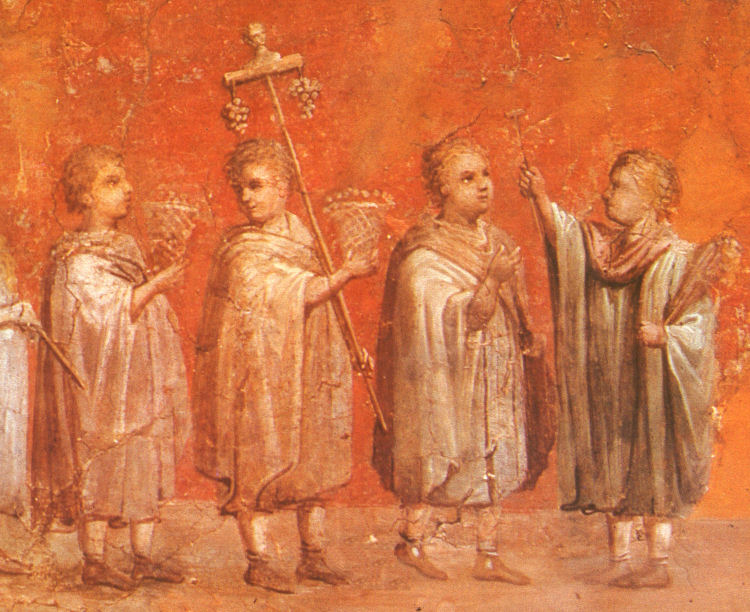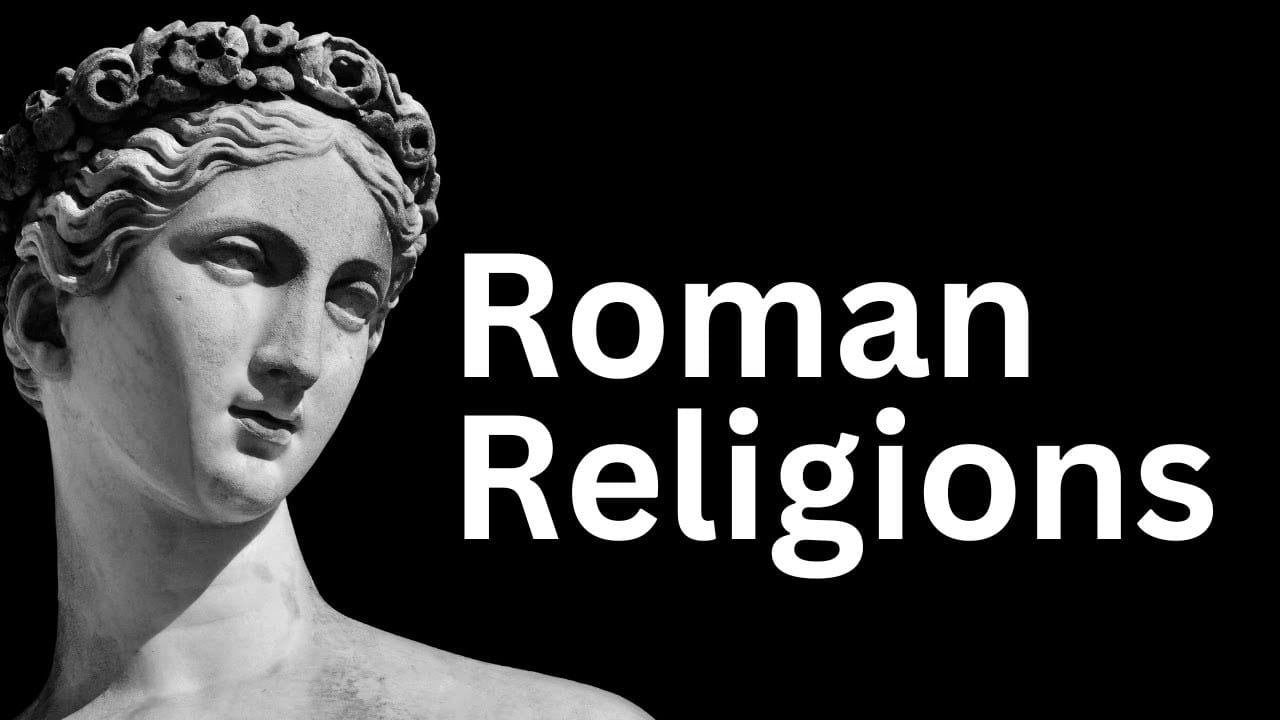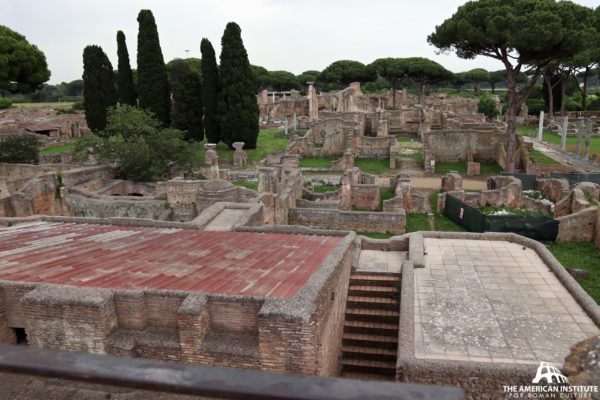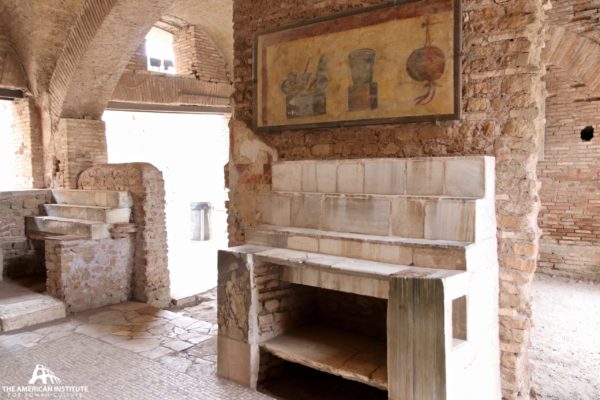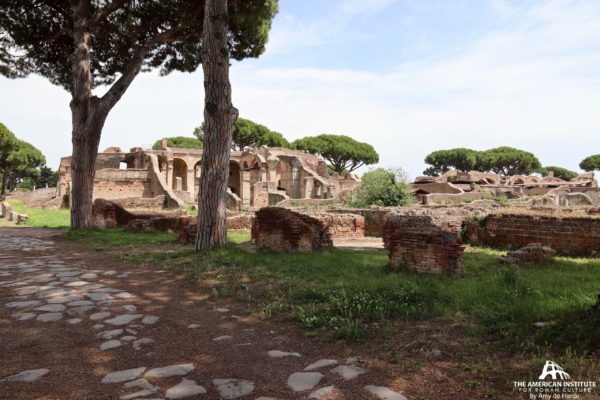Watch our video overview:
Ancient Roman Religion was polytheistic and civic. That means the ancient Roman society worshiped many different gods, each with their specific field of power and function. Every aspect of life in Ancient Rome, like politics, economy, health, natural environment, and agriculture, was attributed to a god’s care and good grace, giving this religion a public and communal identity. Ancient Rome was also very tolerant towards foreign faiths, as long as they did not speak against Rome or against paying taxes to the Empire.
The patron god of Ostia was Vulcan, the Roman counterpart of the Greek Hephaestus. Vulcan was the god of metalwork and fire, and Ostia worshiped him to protect the city against fires that could destroy the stock of grain and other fundamental goods for Rome. Ostia Antica was also dedicated to the cult of Jupiter, Hercules, Ceres (the Roman goddess of agriculture and grain crops), and other deities. There were shrines, sanctuaries, temples, and monuments spread all over town, in private and public spaces, easily accessed by the people. Exercising faith was a fundamental part of everyday life, and the construction of religious buildings in Ostia spread from the Republican to the Imperial period.
Religious diversity was extreme in Ostia Antica. The city not only tolerated it but also embraced this multiplicity. Being an important port city and Rome’s access to Mediterranean trade, Ostia welcomed merchants from all over the Empire who had different faiths, which influenced Ostia’s social and religious fabric. Deities like Magna Mater (originally from Turkey) and Mithras (originally from Persia) were depicted in statues and iconographies found in Ostia Antica, which help us understand more about the relationship between Roman religion and foreign faiths.
Furthermore, Ostia had a temple (built similarly to the Pantheon) dedicated to the cult of the deified Emperors. There was also a large synagogue, dated around the 2nd and 3rd century AD, for the Jewish population that had emigrated from Judaea. After the Edict of Milan, when Emperor Constantine proclaimed the legalization of Christianity in 313 AD, Ostia became a Christian city.
At this point, the commercial activity in Ostia had been replaced by the larger and better-equipped Harbour of Trajan, and the population began to decline. The pagan temples were taken down or transformed into basilicas, and some of the pagan traditions, customs, and spiritual iconographies were absorbed and integrated into the Christian faith.
References
- Merrill, Elmer Truesdell. “The Attitude of Ancient Rome toward Religion and
- Religious Cults.” The Classical Journal 15, no. 4 (1920): 196–215. – http://www.jstor.org/stable/3288303
- Rüpke, Jörg. “On Roman Religion: Lived Religion and the Individual in Ancient
- Rome”. Cornell University Press, 2016 – https://www.jstor.org/stable/10.7591/j.ctt1d2dn8b
- COARELLI, FILIPPO, JAMES J. CLAUSS, DANIEL P. HARMON, J ANTHONY CLAUSS, and PIERRE A. MACKAY. Rome and Environs: An Archaeological Guide. 1st ed. University of California Press, 2014. – http://www.jstor.org/stable/10.1525/j.ctt5vk043.
Explore further:
This content is brought to you by The American Institute for Roman Culture, a 501(C)3 US Non-Profit Organization.
Please support our mission to aid learning and understanding of ancient Rome through free-to-access content by donating today.
Cite This Page
Cite this page as: Darius Arya, The American Institute for Roman Culture, “Ostia, Italy (Ostia Antica) – Chapter 5: Religions of the Roman World” Ancient Rome Live. Last modified 08/28/2020. https://ancientromelive.org/ostia-italy-ostia-antica-chapter-5-religions-of-the-roman-world/
License
Created by The American Institute of Roman Culture, published on 08/28/2020 under the following license: Creative Commons: Attribution-NonCommercial-ShareAlike. This license lets others remix, tweak, and build upon this content non-commercially, as long as they credit the author and license their new creations under the identical terms. Please note that content linked from this page may have different licensing terms.

